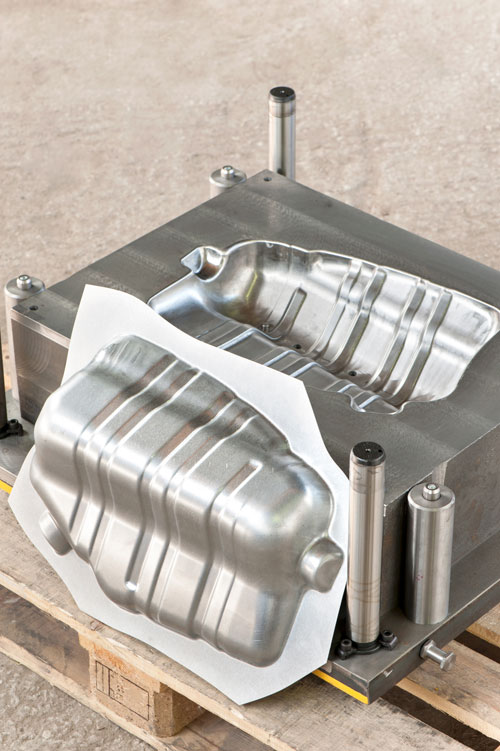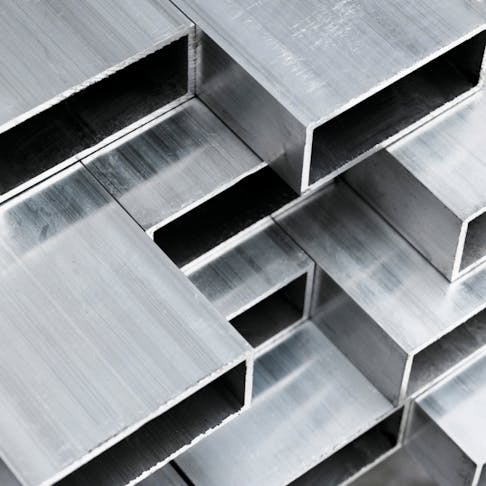7 proven ways aluminum casting supports innovation in manufacturing
A Comprehensive Overview to Aluminum Casting: Techniques, Makes Use Of, and Industry Insights
Aluminum casting is an important process with diverse applications across several sectors. This overview takes a look at numerous casting techniques, including sand, pass away, and investment casting. Each technique has distinctive benefits, contributing to aluminum's online reputation for corrosion-resistant and lightweight components. Comprehending these strategies is crucial for manufacturers wanting to utilize aluminum's homes. Nonetheless, the landscape is rapidly advancing. The influence of present trends on future practices warrants further exploration.
Comprehending Aluminum: Characteristics and Advantages
Aluminum, a flexible metal, is extensively identified for its unique homes that make it a suitable choice for various applications. It is lightweight yet strong, using an outstanding strength-to-weight ratio that is particularly beneficial in industries such as aerospace and automotive. In addition, aluminum displays phenomenal rust resistance because of the development of a safety oxide layer, which enhances its toughness and durability.
The metal is additionally highly malleable, enabling for simple shaping and construction, which adds to its widespread usage in manufacturing. Aluminum is an excellent conductor of electrical energy and heat, making it beneficial in thermal and electric applications. Its recyclability contributes to its charm, advertising sustainability in producing procedures. The combination of these buildings not just boosts efficiency but also minimizes energy consumption throughout its lifecycle, placing aluminum as a key product in modern design and layout.
Overview of Aluminum Casting Techniques

Sand Casting Approaches
Amongst numerous aluminum casting strategies, sand casting stands apart as one of one of the most extensively made use of techniques as a result of its flexibility and cost-effectiveness. This method includes producing a mold from sand, which can be conveniently formed to develop complicated geometries. The process starts with packaging sand around a pattern, generally made of metal or plastic, to produce a dental caries that specifies the final shape. As soon as the mold and mildew is ready, liquified aluminum is put into the tooth cavity, enabling it to cool down and solidify. Afterward, the sand is gotten rid of, disclosing the cast part. Sand casting is especially preferred for creating big parts and small production runs, making it an essential approach in different industries, consisting of auto and aerospace. Its flexibility to various layouts boosts its appeal.
Die Casting Processes
Die casting procedures represent a highly effective technique for producing complex aluminum parts with exceptional dimensional precision and surface area finish. This strategy includes forcing liquified aluminum right into a mold under high stress, guaranteeing that also one of the most complex geometries can be accomplished. There are two key types of die casting: warm chamber and chilly chamber. Hot chamber die casting appropriates for metals with reduced melting points, while cold chamber pass away casting is chosen for aluminum due to its higher melting factor. Both methods promote rapid production and can accommodate high quantities, making them optimal for industries such as automotive and electronics. Efficient die casting calls for exact temperature control and careful mold and mildew design to guarantee and prevent defects top quality.
Sand Casting: A Traditional Method
Modern-day casting methods have actually emerged, sand casting stays a fundamental approach in the aluminum market due to its adaptability and cost-effectiveness. This traditional technique includes creating a mold from a mix of sand and a binding agent, allowing for the manufacturing of complicated shapes and dimensions. Sand casting is particularly useful for low to medium production volumes, as it lessens arrangement expenses and time.
The procedure starts with the production of a pattern, which is after that put in the sand to form a tooth cavity. When the mold is prepared, liquified aluminum is gathered, loading the dental caries and taking the form of the pattern. After cooling, the sand is eliminated, disclosing the finished cast part.
Sand casting is extensively utilized for creating automotive parts, machinery parts, and imaginative sculptures, highlighting its long-lasting importance in various industries of the aluminum industry. (aluminum casting)
Die Casting: Accuracy and Performance
Die casting is a procedure that provides amazing accuracy and effectiveness in aluminum manufacturing. This approach is extensively used throughout numerous sectors as a result of its capability to create complicated shapes with limited resistances. It also provides special obstacles that need innovative remedies to assure optimal results.
Process Overview and Perks
When considering aluminum casting methods, pass away casting stands out for its accuracy and performance. This process involves forcing molten aluminum right into a mold under high stress, which permits for tight resistances and detailed layouts. The quick cooling of the metal assurances fast solidification, resulting in top quality parts with very little surface area blemishes. Furthermore, die casting offers excellent repeatability, making it appropriate for big production runs. Making use of reusable molds significantly reduces material waste and production time, adding to cost-effectiveness. Furthermore, the toughness and sturdiness of die-cast aluminum parts make them favorable for demanding applications. Overall, die casting combines progressed technology with functional advantages, placing it as a leading option in aluminum casting techniques.
Applications in Different Industries
The adaptability of die casting allows its application throughout a wide variety of sectors, showcasing its accuracy and performance. In the automobile market, pass away casting creates complex elements such as engine blocks and transmission housings, adding to weight decrease and boosted efficiency. The electronic devices sector take advantage of die casting by creating light-weight and resilient housings for numerous tools, enhancing both functionality and visual appeals. In the aerospace field, this method offers high-strength parts that hold up against extreme conditions find out while maintaining low weight. Additionally, durable goods manufacturers utilize pass away casting for producing parts that require complicated geometries and tight resistances. Generally, pass away casting plays an important role beforehand technology and product design across numerous markets, highlighting its importance in contemporary manufacturing.
Challenges and Solutions
Many obstacles arise in the die casting procedure that can affect both precision and performance. One considerable concern is the occurrence of flaws such as porosity, which can endanger the integrity of the end product. In addition, keeping specific temperature level control is read this crucial, as variants can lead to irregular product homes. Device deterioration also present difficulties, often causing enhanced manufacturing prices and downtime. To reduce these issues, manufacturers make use of advanced simulation software application to predict prospective issues before manufacturing begins. Applying routine maintenance timetables for equipment and devices likewise helps preserve performance. Moreover, buying premium materials and using competent professionals can boost overall process dependability, making sure that high standards of precision are constantly fulfilled.
Investment Casting: Detail and Intricacy
Investment casting is frequently linked with high accuracy and complex styles, its true toughness lies in the capability to generate intricate geometries that would be challenging to attain with various other manufacturing processes. This strategy employs a wax pattern, which is coated with a refractory product to create a mold. When the mold and mildew is created, the wax is melted away, leaving a cavity that flawlessly duplicates the initial pattern.

Applications of Aluminum Castings Across Industries
Investment casting's capability for generating complex aluminum components has actually made it a useful strategy throughout different sectors. his explanation In the automobile market, aluminum spreadings are made use of for engine blocks, transmission housings, and suspension elements, adding to weight reduction and boosted gas performance. The aerospace market take advantage of aluminum castings in airplane frameworks, generator real estates, and landing equipment, where strength-to-weight ratio is vital. Aluminum Foundry. Additionally, the electronics field uses aluminum castings for heat sinks and enclosures, making sure reliable thermal management and toughness. In the building market, aluminum castings are utilized for architectural elements, home window frameworks, and architectural parts, offering rust resistance and aesthetic charm. The marine industry includes aluminum spreadings in boat engines and fittings due to their light-weight and resistance to seawater deterioration. Generally, aluminum spreadings demonstrate adaptability and functionality, making them essential in varied applications across many areas
Existing Fads and Future Instructions in Aluminum Casting
Recent innovations in aluminum casting innovation are forming the future of producing throughout different industries. One significant fad is the boosting adoption of additive manufacturing methods, which permit for more facility geometries and decreased material waste. Additionally, the integration of automation and robotics streamlines manufacturing processes, improving effectiveness and accuracy.
Sustainability is also a driving force, with manufacturers focusing on reusing aluminum and decreasing power usage throughout the casting procedure. This shift not only decreases ecological impact but also lowers functional expenses.
In addition, advancements in simulation software enable much better style and optimization of casting processes, leading to higher high quality products with less flaws. As sectors proceed to accept these technologies, the demand for high-performance and lightweight aluminum components is anticipated to rise, further strengthening aluminum casting's role in the future of manufacturing. Generally, these trends highlight a dedication to performance, sustainability, and technical improvement in the aluminum casting sector.
Frequently Asked Questions
What Are the Environmental Influences of Aluminum Casting Processes?

Just How Does Aluminum Casting Contrast to Other Products?
Aluminum casting offers lightweight, corrosion-resistant residential properties, making it useful compared to larger metals like steel. Its thermal conductivity and ease of creating better enhance its allure, while certain plastics offer versatility doing not have in standard aluminum applications.
What Safety Steps Should Be Taken Throughout Aluminum Casting?
Throughout aluminum casting, vital precaution consist of putting on safety gear, ensuring correct ventilation, utilizing fire-resistant materials, maintaining equipment consistently, and sticking to security methods to avoid crashes and direct exposure to harmful fumes and liquified steel.
Exactly How Can I Select the Right Aluminum Alloy for Casting?
Picking the appropriate aluminum alloy for casting involves evaluating mechanical buildings, corrosion resistance, and intended application. Consider elements like temperature resistance and weldability to assure the chosen alloy meets certain efficiency and durability demands.
What Are the Common Problems in Aluminum Castings and Their Solutions?
Usual problems in aluminum castings include porosity, shrinkage, and surface area flaws. Solutions include improving mold design, regulating cooling rates, and making sure proper alloy selection, together with implementing thorough evaluation methods to identify and fix these concerns successfully.
Amongst the most frequently made use of techniques are sand casting and pass away casting, each offering distinctive benefits and applications. Amongst various aluminum casting techniques, sand casting stands out as one of the most commonly utilized approaches due to its convenience and cost-effectiveness. Hot chamber die casting is appropriate for metals with reduced melting points, while cool chamber die casting is favored for aluminum due to its greater melting point. Contemporary casting techniques have actually arised, sand casting remains a fundamental approach in the aluminum sector due to its convenience and cost-effectiveness. When taking into consideration aluminum casting approaches, pass away casting stands out for its accuracy and efficiency.